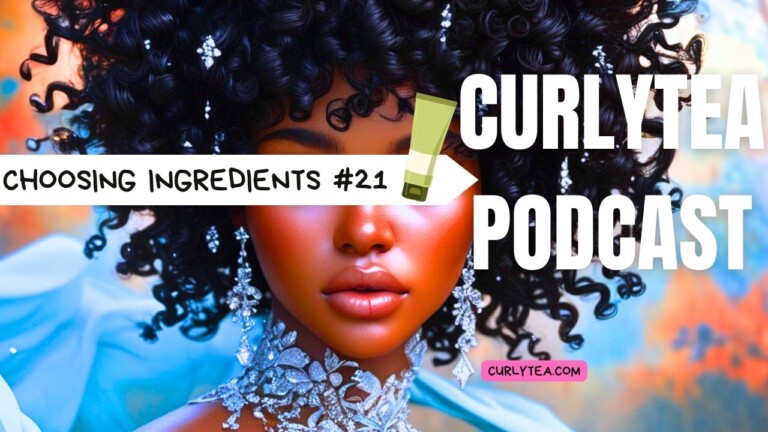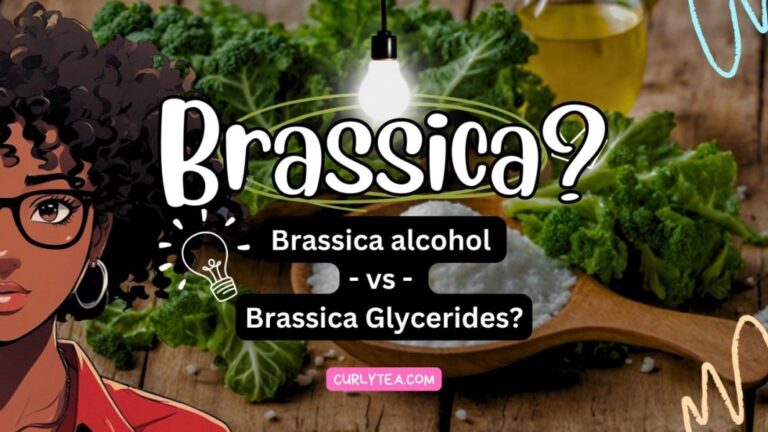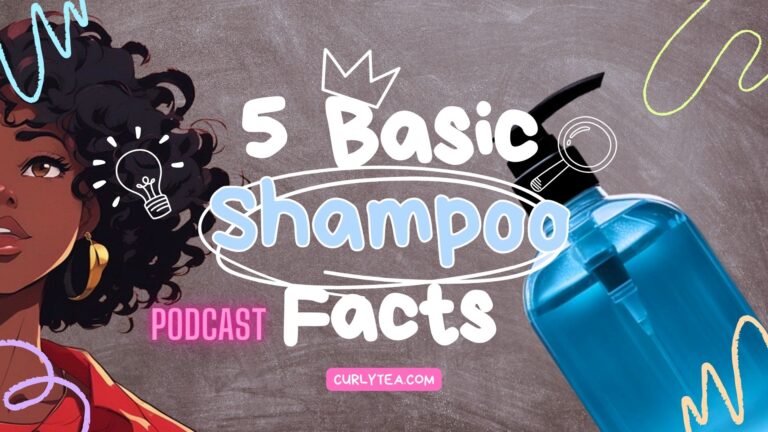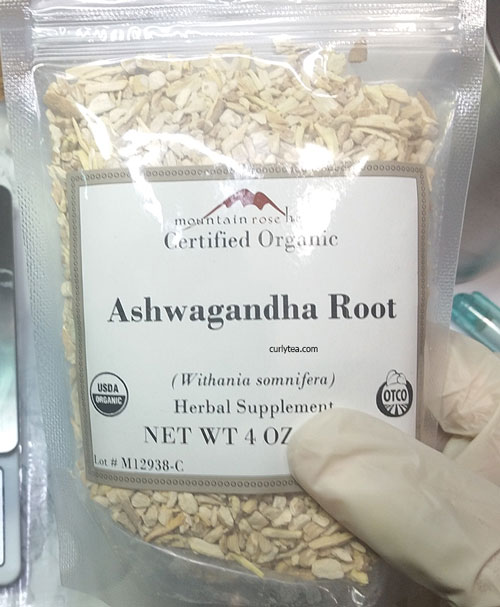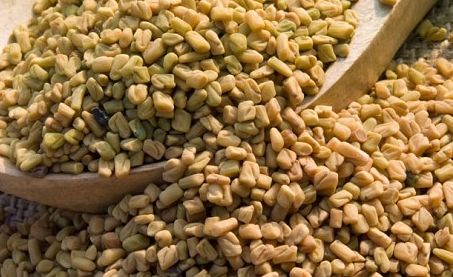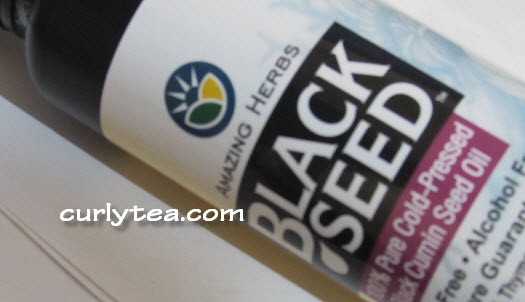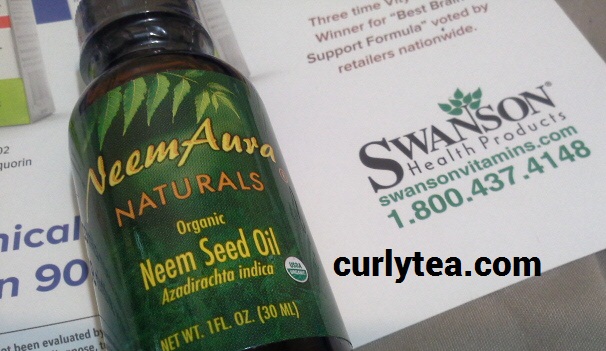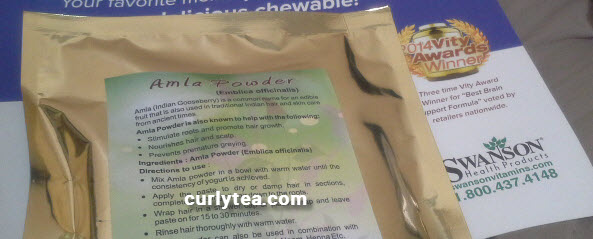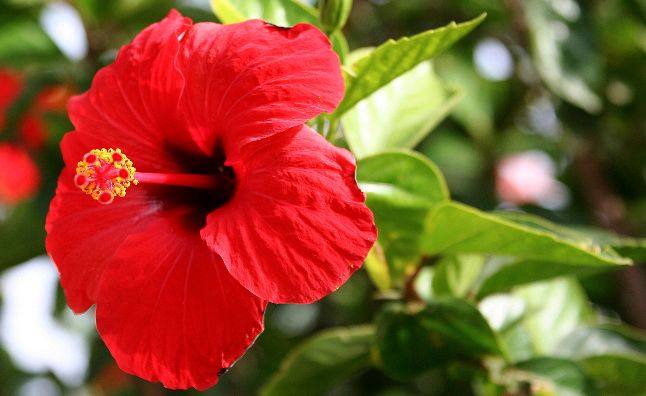
In another example of why keeping it simple matters, I tested another simple recipe using my fav emulsifier, BTMS, along with another emulsifier blend which added more creaminess than I realized it would.
GET THIS CREAM as a promotional gift when you sign up for an online consultation:
http://curlytea.com/consult/book-an-appointment
I used my fractionated coconut oil / olive oil blend: (50% olive, 50% frac). I used 2 TBSP in all, using 1TBSP with the oil phase and 1TBSP added after the emulsion was formed. I like the feel with some type of oil(s) added after the emulsion comes together.
I like this hair cream because its thicker and creamier than my previous versions. I wrote about this in an earlier post, but there is an emulsifier blend which I am really impressed with. People have incorrectly labeled it as a “base” probably because of the way it was listed at the company’s website.
Its a blend of “Cetyl Alcohol (and) Stearyl Alcohol (and) Stearalkonium Chloride (and) Dimethyl Stearamine (and) Lactic Acid”.
Its sort of the same way BTMS is a blend of “Behentrimonium Methosulfate (and) Cetearyl Alcohol”. Or the way ECOMulse is a blend of “Glyceryl Stearate (and) Cetearyl Alcohol (and) Sodium Stearoyl Lactylate”
TIP: To get a creamier creamy feel using BTMS, try to up the amount of water/aloe vera juice and decrease the amount of oil, or save half of your oils to add to the emulsion during the COOL DOWN phase.
I ordered it a while ago and just got around to really using it. Well, I am simply impressed with its ability along with BTMS — based on the amount of water and other ingredients you add — to create a thick but not waxy, creamy, ‘heavy cream’. It made my hair super soft the second I put it on.
Cetyl alcohol and Stearyl alcohol are thickeners. Dimethyl Stearamine is an antistatic emulsifier used to help control frizz and condition hair.
Stearalkonium Chloride is an antistatic ingredient with preservative properties. It is also classified as a mild surfactant if used towards that purpose. Because Stearalkonium Chloride is cationic, you will see a lot of conditioners listing it as one of the ingredients.
NOTE: Surfactants, aside from the normal definition, are also used in products to aid in the even distribution of whatever you put it in.
According to specialchem4cosmetics.com, Cetyl alcohol, Stearic acid, Stearyl alcohol, Cetearyl alcohol and Glycol stearate are all technically classified as having ‘surfactant’ properties too. So don’t just think of SLS or harsh cleanser when you think “surfactant”. (1)
These are the current percentages. As always, don’t be afraid to experiment, but ALWAYS start out simple (use water instead of teas) until you can test it. THEN the next time you make it, add your precious herbs.
81% purified or distilled water
3.75% BTMS
4% Cetyl Alcohol (and) Stearyl Alcohol (and) Stearalkonium Chloride (and) Dimethyl Stearamine (and) Lactic Acid
10% oil(s) of your choice
0.25% fragrance (I only used this much b/c I wanted a superlight scent)
1% preservative (or use your preservative’s instructions)
(1)http://www.specialchem4cosmetics.com/services/inci/index.aspx?function=58
TO DO: Later, I will test it as a cream rinse (rinse out conditioner) and probably mix a bit of it with liquefied African black soap and use it as a conditioning cleanser.
How do you make your DIY hair creams?
 CURLYTEA
CURLYTEA


